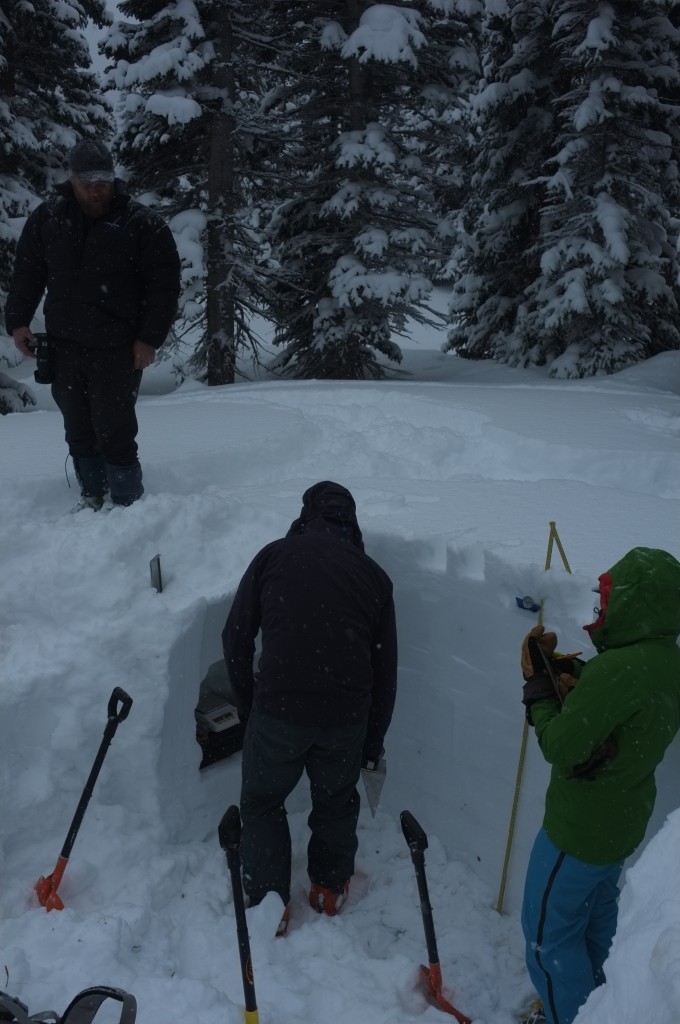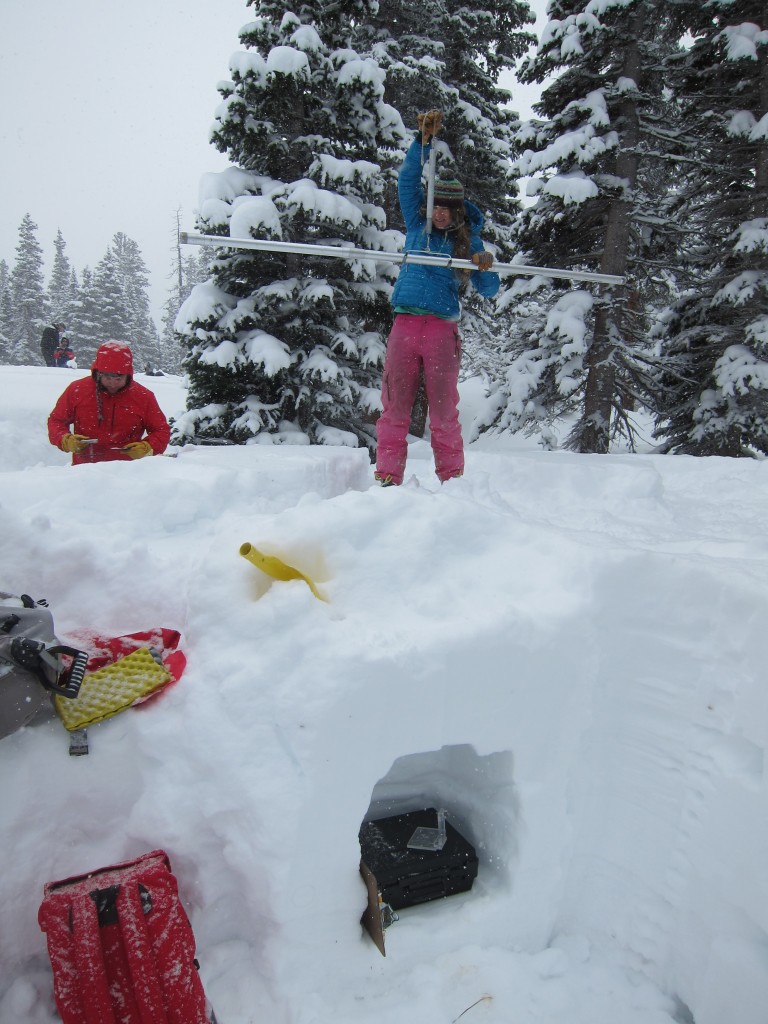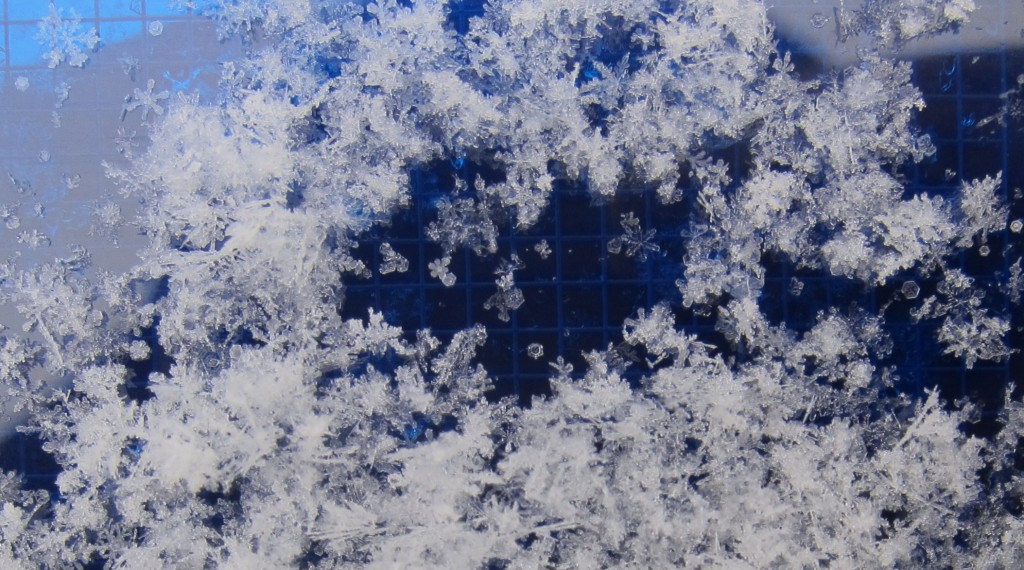Charlie was able to attend a NASA-funded snow science field workshop at the Fraser Experimental Forest during the second week of January. The course was led by Dr. Kelly Elder, a research snow-hydrologist at the Rocky Mountain Research Station and Colorado State University in Fort Collins, CO. Workshop participants spent the week mostly in the field, learning many techniques for reliably measuring snow from a hydrologic perspective. UHPSI hopes to be able to better understand snow dispersal patterns on the ranch (which are largely dominated by strong winter winds), and use this understanding to help inform our hydrologic modeling of the landscape.
In the images below you can see workshop participants analyzing the mass density and stratigraphy of snow pits at 11,000 feet near Berthoud Pass, CO.
Charlie Bettigole (UHPSI Co-director) and Alice Hill (PhD candidate at University of Colorado Boulder) analyze their snow pit as Dr. Kelly Elder looks on.
Dr. Kelly Elder explains the workings of the ram penetrometer, a common, simple tool for measuring resistance of the snowpack – especially useful for quantifying layers of varying densities without digging a large pit. Banning Starr (Fraser Experimental Forest Manger and Ecologist), Maxim Lamare (postdoc at Royal Halloway University of London), and Tshering Tashi (Snow scientist from the Bhutan Ministry of Economic Affairs’ Department of Geology and Mines) look on.
Emily Baker (PhD candidate at University of Colorado Boulder) learns to use the federal sampler, a universally used tool for measuring snow water equivalents (SWE). Blaine Morriss (US Army Cold Regions Research and Engineering Laboratory, Hanover, NH) photographs snow crystals in the background.
Very low density (<3.5% water content) new fallen snowflakes, photographed by Charlie Bettigole with a Canon Powershot S95 on macro-setting housed in a custom snow crystal photo cradle.




